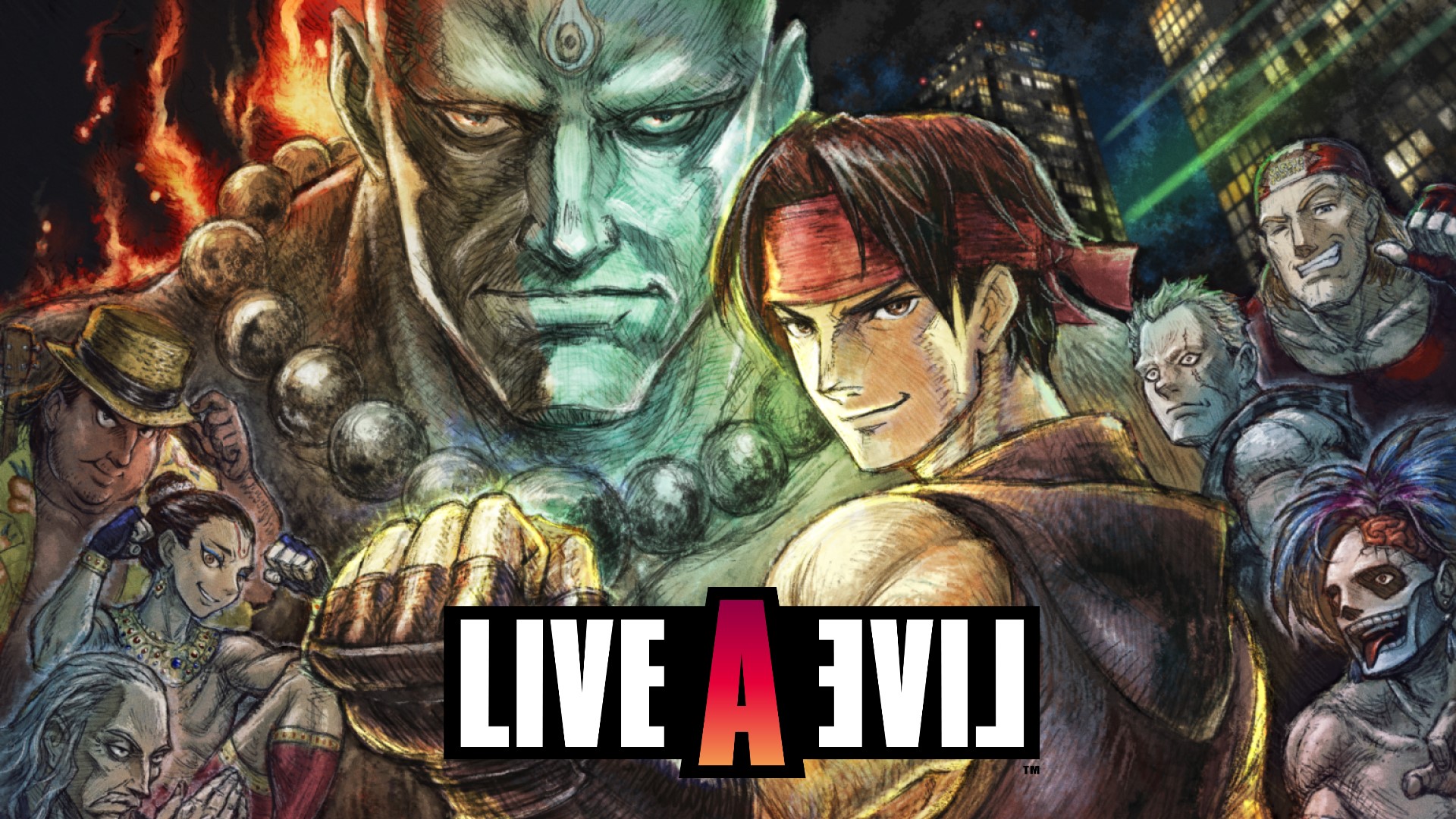Live A Live
Yes, It's Pronounced "Live A Live"
One of the biggest blunders this year has to be the pronunciation of what should be a simple title to say out loud. I was guilty of falling for this mix-up myself when it came to unboxing Live A Live. It was called by different names, whether it was "Live" Alive, Live "A" Live, "Live" A "Live," etc. I understand that trying to emulate the different ways to say "Live" and "Alive" doesn't translate well via text but it was multiple variations of "Living" and going "Live" on air. All it took was a simple Google search to realize that the game is indeed pronounced "Live," like on air, and "Alive." Thus, we have Live A Live.
Live A Live was one of Square's pivotal RPGs during an era when the developer dominated the genre outside of their flagship Final Fantasy series. Released in 1994, it was an experimental title that would kickstart many careers who worked on the game. This would be the first directing role of Takashi Tokita, who previously worked as the lead designer of Final Fantasy 4. He would go on to direct several iconic games including Parasite Eve, Chrono Trigger, and Chocobo Racing. Not the lackluster "spiritual successor" that was released earlier this year. Yoko Shimomura was also the composer of Live A Live in her first major project since joining Square mere months before.

Please Select Your Character
The ambitious RPG wasn't just a starting point for several staff members who would become living legends in their own right, it also redefined what an "RPG" should be like. The main drawing point of Live A Live is that it doesn't follow a concrete plot. Rather, there are seven standalone chapters that can be played in any order with various gameplay differences represented as time periods. There's the Present Day, Wild West, Near Future, Distant Future, Imperial China, Edo Japan, and Prehistory. Upon completion of all seven chapters, a final chapter is unlocked, tying everything together.
What's impressive about each chapter is that they feature a unique manga artist as the lead designer. Each chapter also features a unique gameplay mechanic that treats itself as its own game rather than a piece of a puzzle. The best example is the chapter I decided to cover for the sake of leaving a first impression, the Present Day. The story for the Present Day chapter centers around an up-and-coming talented fighter named Masaru Takahara. He only has one goal in mind and that is to be the strongest in the world at any cost.

Saikyo Style Is The Best!
There are several reasons why I decided to begin with Present Day over all of the other chapters, despite me going at this game blindly. The game's cover lists each time period along with an accompanying screenshot. What caught my eye was something that appeared to be a character select screen akin to a fighting game. As expected, the Present Day's protagonist follows all of the criteria of a World Warrior looking to take the Art of Fighting from the Streets with an Iron Fist---
Okay so obviously this chapter plays homage to fighting games, which is unique considering that this is an RPG. How on Earth can you possibly replicate the feeling of a fighting game? Somehow, Square was able to pull this off and I was thoroughly impressed. Unlike most of the other chapters, there is no grinding, random battles, and a "story." The player chooses which of the six competitors to fight in the character select screen followed by their taunting intro. Afterward, the fight begins, pitting Masaru against his competitor while following the rules of a turn-based RPG.

Sometimes You Gotta Job To Win
The trick to winning these fights, at first, is to take advantage of Masaru's ability. The player doesn't level up after each fight, rather he learns moves by getting hit with a fighter's signature attack. Each fighter has two unique attacks that are listed on the fighter select screen and upon getting hit, Masaru will learn the move and use it against them. In Final Fantasy terms, Masaru is similar to a Blue Mage or Kimahri from Final Fantasy 10. I began my conquest in order of the fighter's appearance from left to right and there were some fights that were more difficult than others.
In the beginning, Masaru's movepool is limited to specific types, but as he learns more moves, his variety of attack types increases. Each enemy, save for the final boss, has a weakness to a type of attack. Some are weak to kicks, punches, throws, and holds. The more moves you have in your arsenal, the more trivialized each fight becomes. There's more difficulty in keeping the enemy alive to learn their moves than it is to defeat them. This is especially true as more moves at used as counterattacks automatically. After the final opponent is defeated, the final boss appears, slaying the combatants before Masaru, and challenging him to a fight to the death.

DIIIIIIIIIIVE KIIIIIIIIIIIIIIIIIIIICK
Despite the game being an RPG, the Present Day chapter forces the player to incorporate many "fighting game" tactics that still hold true 28 years later. The only way for Masaru to heal himself is by using a skill called Focus. Focus heals Masaru's wounds and gives him a buff to all beneficial stats while nullifying status ailments. Proper spacing is required to ensure that Masaru doesn't take more damage than he heals, thus making zoning a valid tactic. None of the moves costs any "mp" or resources aside from waiting your turn, which can be manipulated by one simple attack. Fleetfoot.
Fleetfoot is learned by Seishi Moribe, the elderly Koppo master who, despite their martial art, doesn't incorporate any holds or grapples. Instead, one of the moves that can be learned is Fleetfoot, a dive kick that has insane recovery time. With the Focus buff, it's possible to use Fleetfoot many times in succession until it's the opponent's turn. There are stronger attacks, sure, but locking a strong foe in place is far more valuable. Chip damage! Another fighting game mechanic.

Go Home And Be An RPG Person!
The fighting game references don't stop here as Yoko Shimomura did compose the soundtrack for this game. Prior to her work in Square, she was a composer for Capcom who composed none other than the Street Fighter 2 soundtrack. Thus, the music in this chapter is very much intentional to her former work. Throughout my playthrough, I couldn't help but draw comparisons to Ken Masters' theme with the battle them in Present Day. It all makes sense now. Is Live A Live's Present Day chapter a Street Fighter RPG? No of course not, but I would be excited to see a fighting game RPG sometime.
In the end, the chapter was short enough as it was nothing more than a "boss rush" mode of seven fights in a row. With the other chapters, there may be fleshed-out plots and traditional RPG mechanics. Playing this, I can see where Square's inspiration for SaGa Frontier came from. It's rare to see games with several playable protagonists each with their own unique gameplay elements while also being loosely connected. As I don't want the surprise to be spoilt, I'll definitely come back to Live A Live with a full review once all the pieces are put in place.

Live A Live is available on the Nintendo Switch.

